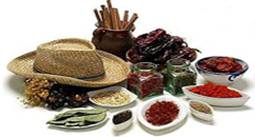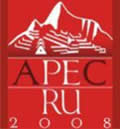United Kingdom
| Welcome |
| Peru in Brief |
| History |
| Geography |
| Government & Politics |
| Maritime delimitation between Peru and Chile |
| News |
Links |
| PERUVIAN SEAFOOD | 
|
||
The Peruvian coastline has long fascinated even the most renowned foreign explorers who have flocked to Peru over the centuries. Nineteenth-century German scientist Alexander von Humboldt was one of the first to study the Peruvian sea current that would eventually bear his name. Explorers from other nations were to follow suit. |
|||
American novelist Ernest Hemingway, author of The old man and the sea, spent several seasons fishing for sailfish off Cabo Blanco on Peru's sun-drenched north coast. These days, more visitors come drawn by Peru's cooking, and head first for the cebiche, among other classic dishes from Peru's trove of seafood recipes. |
|||
Rich in resources |
|||
The Peruvian seas are famed for their diversity and their wealth of marine species. The Peruvian Oceaneering Institute claims there are a staggering 700 fish species to be found off Peru's coastline, of which 70 are commercially exploited. There are also 400 species of shellfish. The center of all this fishing bustle is the port of Paita, where two major sea currents come together: the Humboldt, which brings cold water from the seas off the north of Chile, and the El Niño current, which runs south from the warmer Ecuadorian waters. The rich fishing grounds to be found in this part of the Pacific Ocean is directly linked to the abundance of plankton that rises from the ocean depths. |
|||
| Fishing history & tradition | |||
With this marine biodiversity in mind, it is hardly surprising that Peru is doted with a long-standing fishing tradition. Historian María Rostworowski, writing in La costa peruana prehispánica, states that in the pre-Inca and Inca eras, the shoreline was dotted with a long chain of communities that basically lived off fishing. To this day, one can find superb pieces of pottery that portray the fishing tasks of the ancient Peruvians. On the north coast, Peruvians still go out fishing on their totora reed rafts called caballitos, rustic rafts that are living proof of Peru's age-old fishing tradition. Fishing launches moored in bays along the coast show traces of the design of the first boats brought by the Spanish conquerors, as well as the rustic boats of Italian immigrants who settled the town of Chucuito, near Lima's port of Callao. Also noteworthy is the unique style of the Peruvian bolicheras, small boats that fish for anchovy with fishing nets called boliches. |
|||
Visitors who travel along the Peruvian coastline will discover the diversity of fishing techniques, which range from fishing with bait, hauling in shellfish with harpoons and nets, underwater deep-water fishing to small-scale fishing boats and huge industrial trawlers. These include seacraft from as far afield as Japan, South Korea and Europe, professionals seeking out tuna, giant squid, shark and cod from the deepest waters. For many years, and even recently, Peru has led the world in fishmeal exports. Fish exports for human consumption include canned tuna, Pacific Bonito and sardines, as well as frozen Pacific Hake. |
|||
Seafood cooking |
|||
Peru is famous for its seafood. Its reputation has been further enhanced by the diversity and quality of the fish and shellfish to be found off Peru's shores. The north coast is home to species like groper, sea bass and swordfish. Shellfish include lobster, shrimp, oysters and crab. White-meat fish like Pacific Croaker and sole are commonly found all down the Peruvian coast, as well as Pacific Ruff, Pacific Bonito and tuna. Common shellfish varieties range from octopus, to squid, razor clams, urchins, wedge clams, rock shells and mussels. |
|||
Apart from this dizzying abundance of fish and shellfish varieties, however, the fundamental reason why there is such good seafood to be had here is the skilled hand of the Peruvian chef. Few countries in Latin America can compete with Peru in seasoning, and this goes especially for seafood dishes. |
|||
The everyday fare in fishing villages all down the Peruvian coast shows unmistakable signs of culinary tradition. This overlaps in countless seafood joints which are overflowing with customers, and becomes art form in five-fork restaurants. |
|||
The Costa Verde, a splendid spot on one of Lima's beaches with a view of the sea, hosts one of the finest buffets to be had in Lima. |
|||
Another fine seafood restaurant is Astrid & Gaston, which serves up a sophisticated variety of fish and shellfish with the most up-to-date culinary techniques worthy of the chef's Cordon Bleu background. |
|||
To start off, we recommend the fillet mignon of tuna drenched in honey and sesame seeds, or a double fillet of swordfish done in peppercorns and a hot tomato and caper vinaigrette sauce. |
|||
Another option is to try one of the countless 'cebicherías' to be found all down the Peruvian coastline where mouth-watering flavor, family attention and reasonable prices replace waiters and white tablecloths. |
|||
| Cebiche: An exceptional dish | |||
Although there are some variations on the theme to be found abroad, it is common knowledge that the Peruvian cebiche is simply unbeatable. There is no doubt that this dish is the star of the local cuisine and has been the trailblazer in making Peru's cooking famous the world over. The cebiche is based on freshly-caught fish from the Pacific, marinastet in seconds with the sour green lemon brought from Peru's northern fruit groves, and spiced with Peruvian ají chili pepper, a pinch of salt, and thinly sliced onion. It is often garnished with eminently Peruvian ingredients such as boiled purple sweet potato and kernels of sweet corn, which help to counter the sting of the ají and the lemon. Fish cebiches can often be blended with, or substituted by, shellfish, with surprisingly good results. |
|||
One cebiche variety that has already drawn its own following is the tiradito: here the fish is cut into long strips, slightly marinaded in lemon juice and served with corn kernels. It differs from the traditional cebiche in how the fish is cut, and the absence of sweet potato and onion. The version dished up in cebicherías today is no doubt similar to the Japanese sashimi which is so fashionable these days: in both, fish is cut into long strips, doted with the flavor of fresh fish prepared right there and then, plus the addition of ginger. |
|||
| Other delights | |||
No gastronomic tour of the Peruvian coast is complete without a mention of the parihuela, a soup based on fish and shellfish varieties and possibly cousin to the French bouillabaisse. The early version used to be prepared with a dash of fermented maize beer called chicha, although some spots now substitute this with beer. The soup starts up with a bubbling sauce of tomato, onion and strips of ají, to which the chef adds fish chunks and crabs or skate, followed by a variety of shellfish. The fish cartilage lends the soup its jelly-like texture. In different parts of the coast one can find variations like one called the Shellfish orgy in Tumbes, and a fish consommé called Wedding night in the fishing port of Pimentel. As its name implies, this phosphorous-laden concoction may be the prelude to a night of passion, although it may just bring on deep sleep instead. |
 |
||
| Another tasty fish recipe is the sudado: here the chef steams the fish fillet or shellfish over a bed of tomato, onion and a few spoonfuls of soup. A simple dish, yet healthy and full of flavor. Another common recipe is to steam the fish by itself. The delicious Pescado a la Chorillana, meanwhile, has the fish swimming in tomato and onions sautéed in oil beforehand. | |||
| The oriental contribution | |||
It would be hard not to mention the Oriental touch, the Asian contribution that has had a major influence on Peruvian cooking. After all, we've already seen how similar the tiradito and sashimi are. There are at least 20 Japanese restaurants that stock their sushi bars with the abundant varieties of fresh fish and shellfish to be had in Peru, and could easily rub elbows with any joint in Tokyo or New York. The Oriental influence is also to be seen in hundreds of Chinese restaurants that whip up soups based on clingfish, and fish dishes like Chita al Vapor (steamed grunt), a recipe that has brought together Chinese, Japanese and Peruvian chefs alike. |
|||
| By Mariano Valderrama. | |||
| Sociologist and gastronomic expert. He has recently published 'The Golden Book of Peruvian Cooking'. | |||
| Source: "El Dorado", April-June 1997, Promperu | |||
| <BACK> | |||





